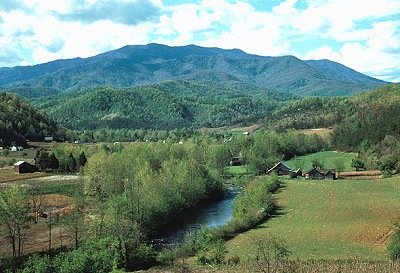Mount LeConte is the third highest peak in the Great Smoky Mountains National Park at 6,593 feet in elevation, just behind Clingmans Dome and Mount Guyot. However, it is the tallest mountain in Tennessee measuring from its base to its tallest peak at 5,301 feet. And there’s is no spot in the park as talked about or sought out around the Gatlinburg area as LeConte.
It has four subpeaks – West Point (6,344 ft), High Top (6,593 ft), Cliff Tops (6,555 ft), and Myrtle Point (6,200 ft) and is also widely known for LeConte Lodge, the highest inn providing lodging for hikers in the Eastern United States.
When discussing the LeConte name, it’s still of great debate which LeConte family member the mountain is named in honor of. Joseph Le Conte, famous geologist, gets many a nod, especially from those in his field. Still, some like the authors of A Natural History of Mount Le Conte, believe Joseph’s older brother John Le Conte, a physicist at South Carolina College, is the rightful honoree. This claim says that Samuel Buckley, in respect to John’s help in moving his barometer to Waynesville, North Carolina, named the mountain in honor of his friend for the aforementioned good deed.
The mountain didn’t see much activity until the 1920s though. Paul Adams, an enthusiastic hiker and explorer, spent a good dose of his down time creating his own adventures in the Smoky Mountains. The Great Smoky Mountain Conservation Association, a group dedicated to establishing a national park in the region, was an interest he set his sights on in 1924. Adams actually led an expedition up the mountain after joining the association with big-wigs from Washington, in order to show them up close the beauty the mountain possessed. They spent the night in a large tent which eventually became the LeConte Lodge – a cabin now, and a popular stop and lodging point atop Mount LeConte. It was a rousing success as nearly a decade later Mount LeConte was included in the establishment of the Smokies as a national park.
Mount Le Conte is made up of Late Proterozoic rocks; mostly metamorphosed sandstone, siltstone, shale, and conglomerate formed over 800–450 million years ago and lies in the Appalachian Blue Ridge geologic and physiographic province. Years of erosion and weather events have given the mountains in the region a distinctive sloping feature. Southern Appalachian spruce-fir left over from the last Ice Age cover the mountain’s peaks and upper slopes.

1 thought on “Mount LeConte”